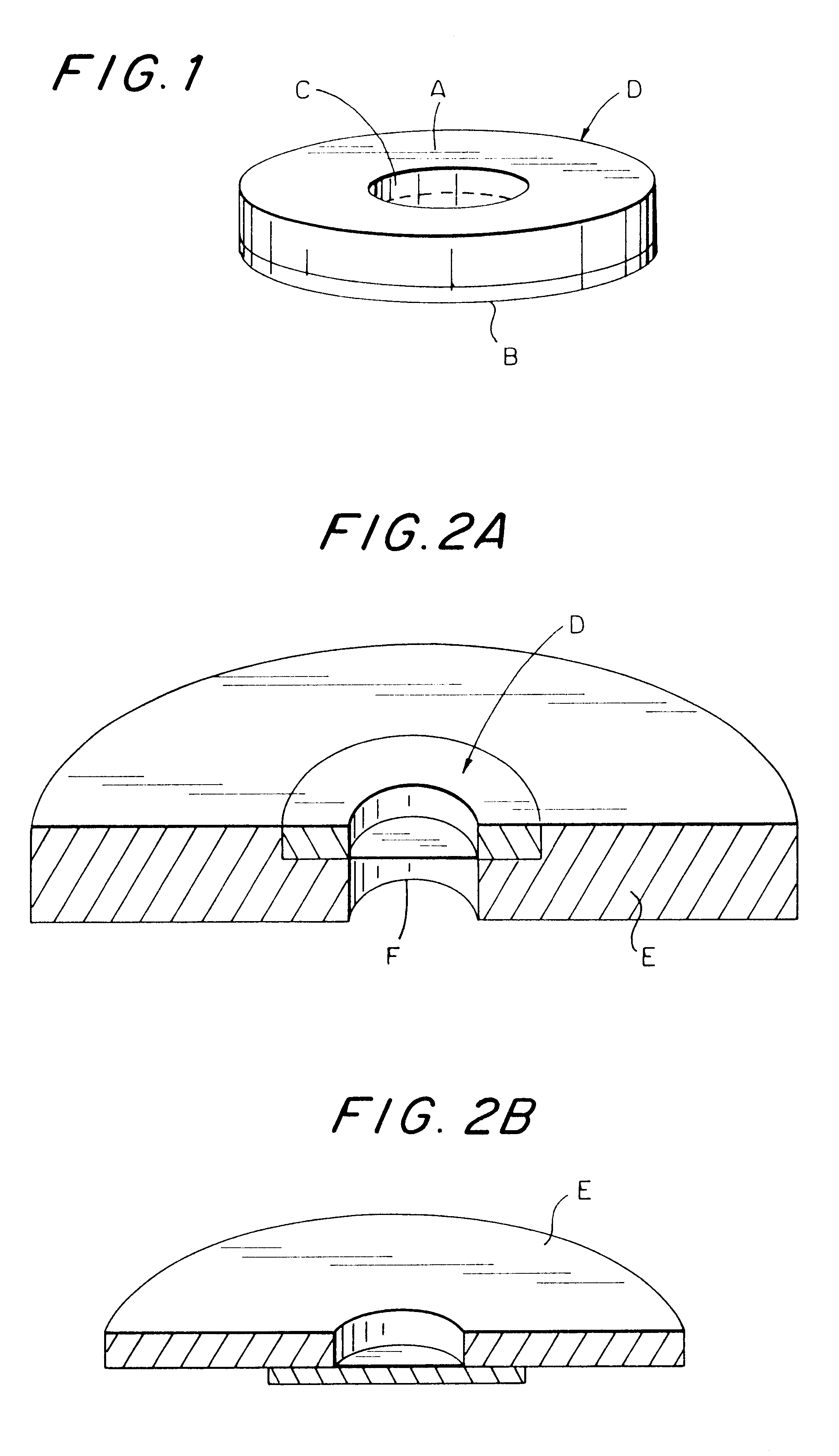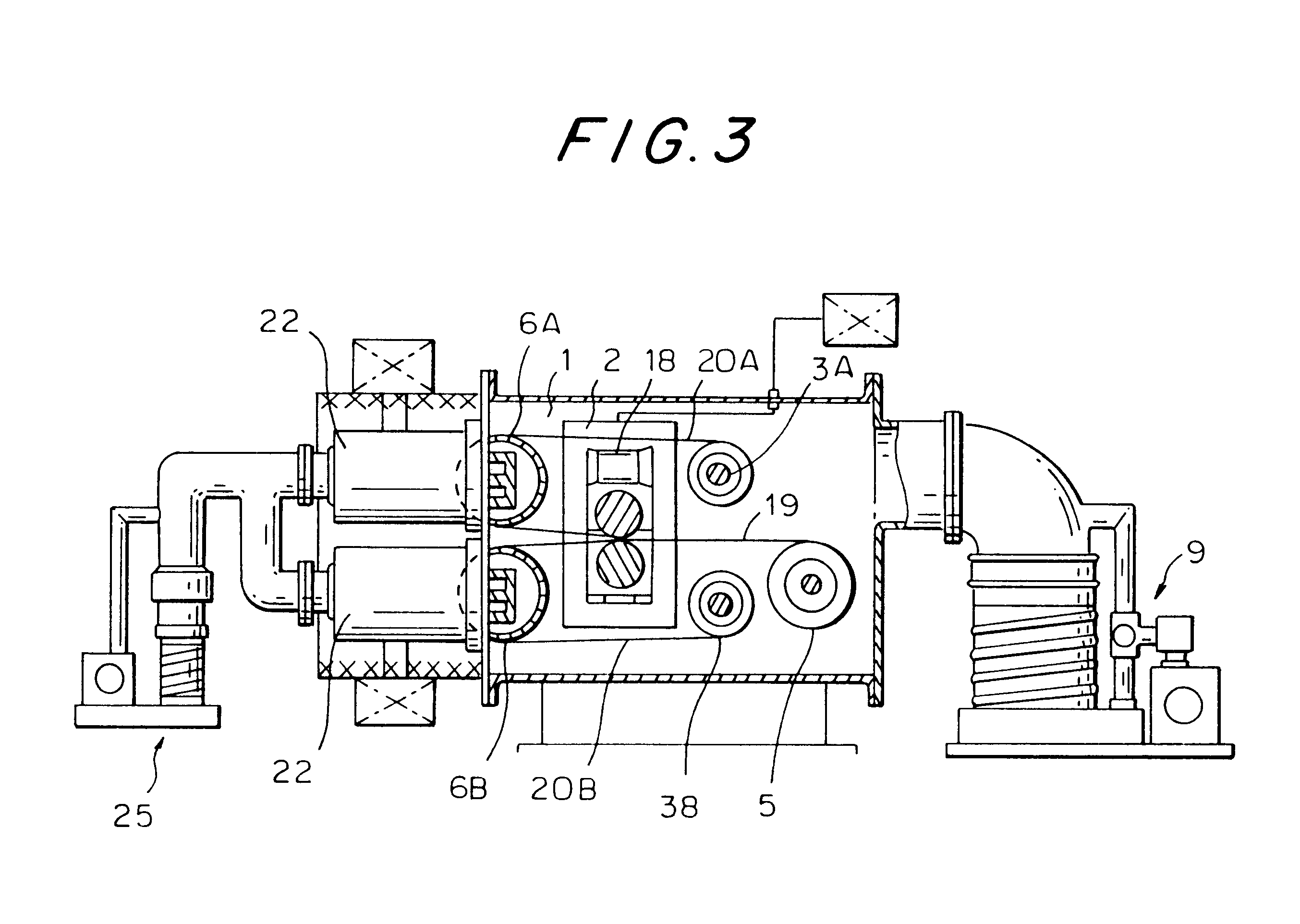Safety valve element for capacitor and capacitor case lid with safety valves
a safety valve and capacitor technology, applied in the direction of functional valve types, cell components, cell component details, etc., can solve the problems of not uniformly hardened, spoiled sealability of the vessel, and not always ruptured
- Summary
- Abstract
- Description
- Claims
- Application Information
AI Technical Summary
Benefits of technology
Problems solved by technology
Method used
Image
Examples
example 2
An aluminum sheet of JIS A3004 type having a thickness of 0.4 mm was perforated using a punch press to form circular openings each having a diameter of 2 to 7 mm to prepare an aluminum substrate. The aluminum substrate and an aluminum foil (AIN 30, Al085) having a thickness of 30 .mu.m were inserted into a vacuum chamber of argon gas atmosphere having a vacuum level of 1.times.10.sup.-2 Torr. so as to provide an etching of approximately 500 angstrom on one surface of the cold-rolled and perforated aluminum substrate and the same etching on one surface of the aluminum foil, which surface was to oppose to the etched surface of the metal substrate, by the magnetron sputtering method. Subsequently, the aluminum substrate and the aluminum foil were laminated such that the etched surfaces of them were made to contact each other and pressure welded by cold rolling at a room temperature and with a rolling reduction rate of 2% to produce a composite material.
A plurality of safety valve eleme...
PUM
 Login to View More
Login to View More Abstract
Description
Claims
Application Information
 Login to View More
Login to View More - Generate Ideas
- Intellectual Property
- Life Sciences
- Materials
- Tech Scout
- Unparalleled Data Quality
- Higher Quality Content
- 60% Fewer Hallucinations
Browse by: Latest US Patents, China's latest patents, Technical Efficacy Thesaurus, Application Domain, Technology Topic, Popular Technical Reports.
© 2025 PatSnap. All rights reserved.Legal|Privacy policy|Modern Slavery Act Transparency Statement|Sitemap|About US| Contact US: help@patsnap.com



